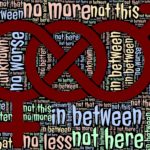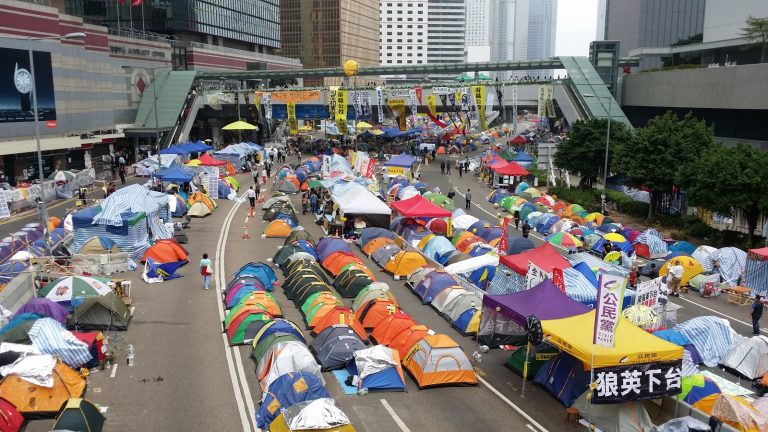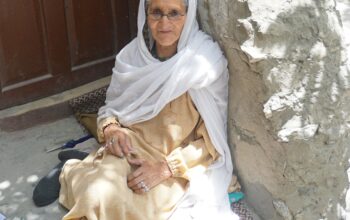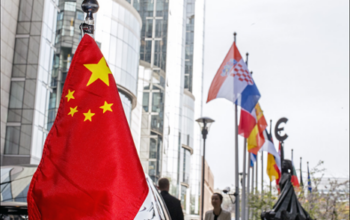About some revolutions we are informed quite well, others I have rarely heard about. The French Revolution was perceived a theme every year at school. The spirit of civil disobedience seems to still be with the French, but yellow is not only the signal colour of the current Gilets Jaunes protests, but also of the Umbrella Revolution.
The Umbrella Revolution?- never heard of it, even though it was relatively recent, only five years ago. A good reason to engage with it, since this uprising is a good example of resistance against governments authority, that reveals interesting about the special government structure of Hong Kong.
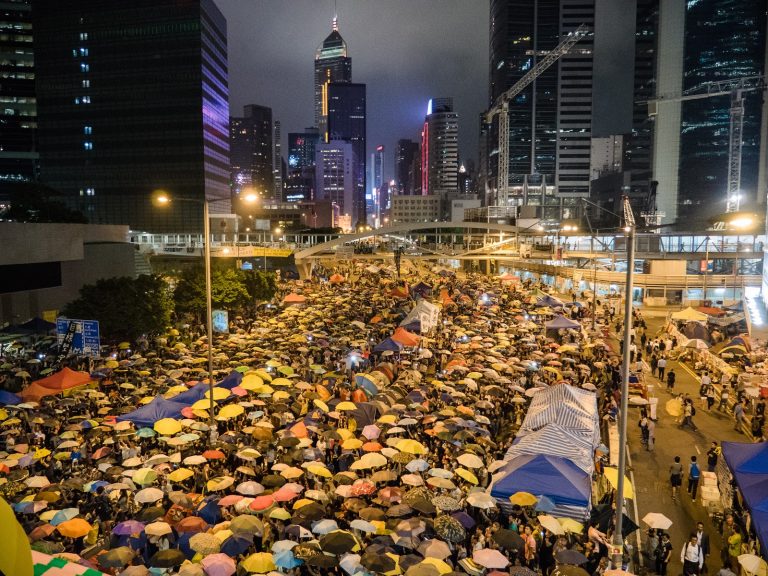
The beginning of an Uprising
In 2014, in the Special Administrative Region of the People’s Republic of China, Hong Kong, was in the international news for an uprising taking place on the streets and public spaces of the city’s central business district.
Triggered were the protests by new election guidelines from the National People’s Congress and lasted for 79 days. They demanded what was originally promised until 2017: free universal suffrage for the elections of the chief executive.
The candidates for this highest political post in Hong Kong are selected by a 1200-headed Chinese nominating committee, who can choose through the reform only two or three suitable candidates. This makes the people in Hong Kong worried that they will be able to choose only from pro-Beijing candidates who would serve as a marionette of China instead of having the interests of Hong Kong and its people in mind. No one, they would actually choose if they had a free choice would become state leader. Which is not a free democracy.
In between revolution and movement
Initiated was the movement by two university professors and a Baptist minister from the civil rights movement Occupy Central with Love and Peace after protesting students were attacked by the police. They used the energy of the following outrage. Students did boycott classes. They formed the heart of the protests, but people from all other ages and social groups joined in. They occupied central places in the financial and political centers and roads of the city, forcing public life and work to stop.
The protesters were using non-violent methods, the police threw tear gas. That was one reason to use umbrellas, which became the symbol of the movement: to protect themselves against the teargas and against rain, sun and all other weather.
Impressing is not only the peacefulness, but also the support and ethical behavior among the protesters, in terms of supporting each other and dealing with the circumstances and organization of a civil disobedience action.
Apropos, this article actually might not fit perfectly into this edition: the protesters dislike the term “revolution” and prefer to be called “Umbrella Movement”- foreign media where the ones who labeled it a revolution. “We are not seeking revolution. We just want democracy!”, is the message of student leader Joshua Wong. They seek real reforms, therefore, as great as it is, all the international attention also worries the movement leaders. It makes it seem like the students want to challenge China’s status quo – which can lead to the big state refusing any pragmatic political conversations. It is a risk to stand up openly against the big power. The movement wants to preserve the rights that were promised and not change the system, as a revolution is defined.
The Special Administration Region Hong Kong
The background of the dissatisfaction lies deeper in the political structure of a Hong Kong and its relationship to China.
Hong Kong is a former British colony that is governed these days by a principle of “one country, two systems”. What it means? What it means is that Hong Kong is officially autonomous and self-governed in many sectors, it is economically and judiciary independent, while its foreign affairs are managed by the Chinese mainland. How strong the autonomy of the smaller island state really is, is although questionable, as this incident showed.
 For China, it is a signal not only to Hong Kong, but to every corner of its wide, contested nation. With Taiwan and Tibet sitting on their edge, the People’s Republic does not allow any independence movements. China did not step back- pragmatic protesters were aware of that.
For China, it is a signal not only to Hong Kong, but to every corner of its wide, contested nation. With Taiwan and Tibet sitting on their edge, the People’s Republic does not allow any independence movements. China did not step back- pragmatic protesters were aware of that.
The relations between Hong Kong and China are not only playing a role for the next elections, but for the general economic, political and social future of the island state. It is a struggle about the future status of Hong Kong- staying semi-autonomous or becoming as free as the younger generations demand.
It is not over yet
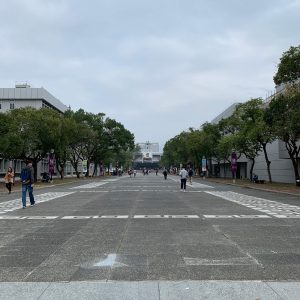 The consequences are not over- the Umbrella Revolution or Movement has been recently in the news again. Charges are pressed against the leaders of the demonstrations. They are now sentenced to possibly up to seven years in prison, based on a (internationally highly criticized) law from colonial times, for disturbing public order. Other movement participants, who wanted to go into politics after the protests ended, faced problems on their own way.
The consequences are not over- the Umbrella Revolution or Movement has been recently in the news again. Charges are pressed against the leaders of the demonstrations. They are now sentenced to possibly up to seven years in prison, based on a (internationally highly criticized) law from colonial times, for disturbing public order. Other movement participants, who wanted to go into politics after the protests ended, faced problems on their own way.
Recently, thousands of people went protesting on Hong Kong’s streets again, against extradition laws that degree more involvement of China in the internal affairs of Hong Kong, then many want. The fight about the country’s political future has also not seen its end.
by Nina Kolarzik
Photo Credits
“University Mall Hong Kong” by Yannick Deller, All Rights Reserved
“31th Day Umbrella Revolution”, Studio Incendo, CC BY 2.0
“Tents”, qbix08, CC-BY-SA-2.0
“Fist”, qbix08, CC-BY-SA-2.0





